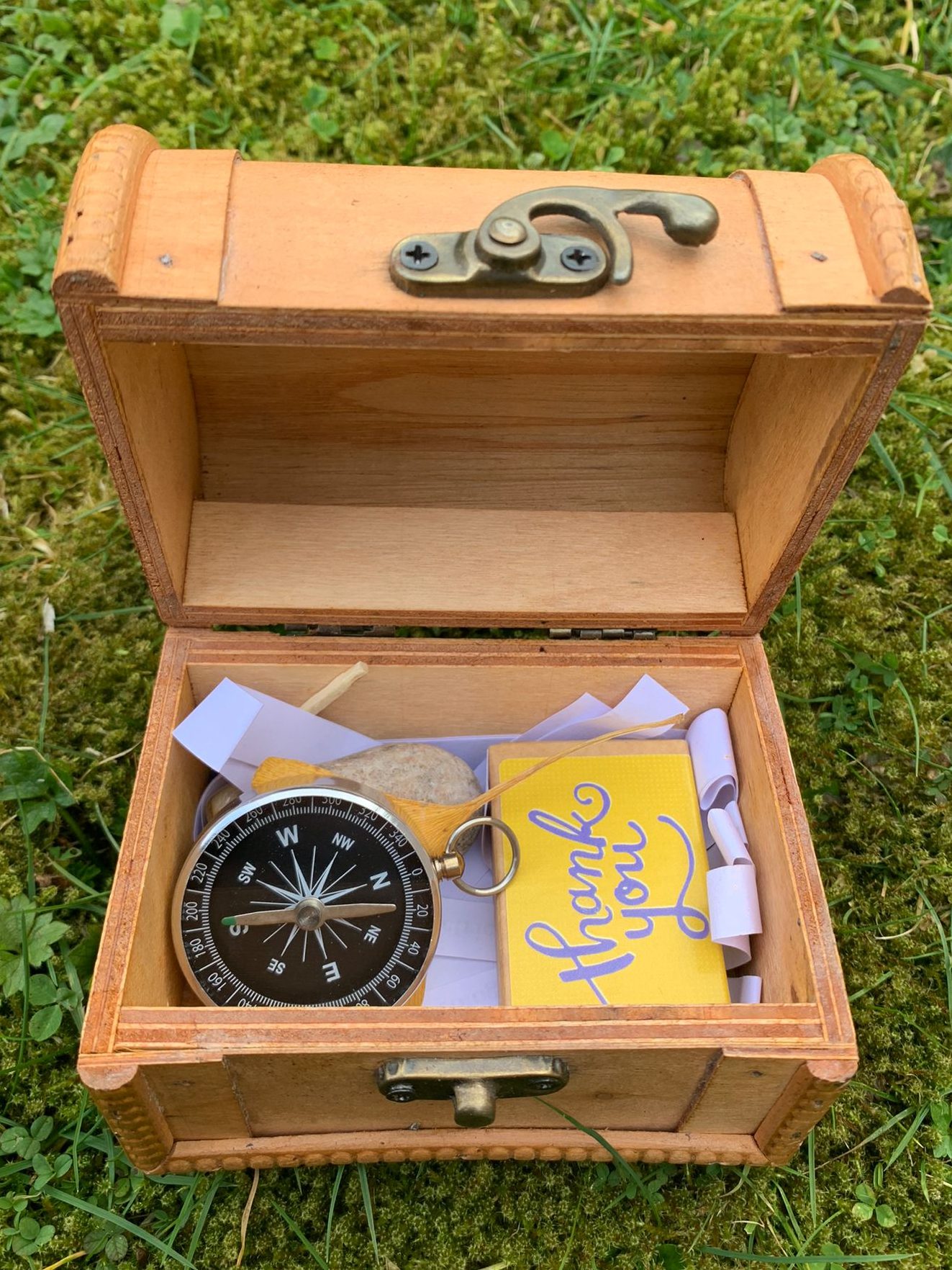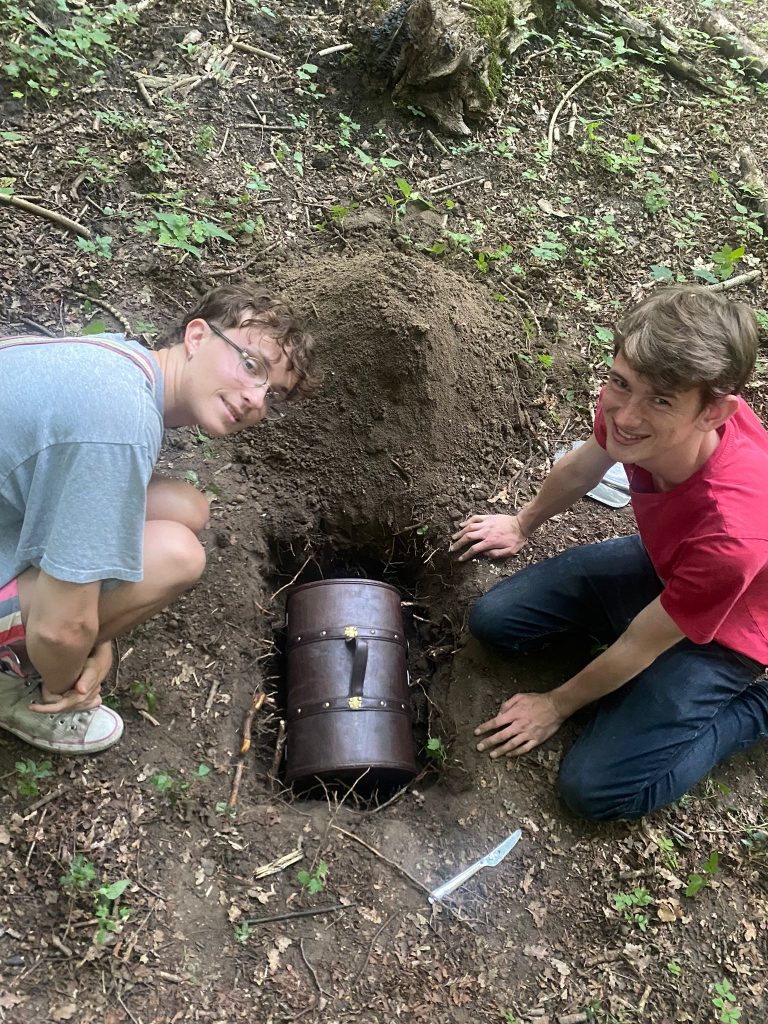
By Matt Sowerby
Collectively creating and burying a time capsule is a fun, imaginative and often poignant way to open up forward-facing conversations about the place of humans within the environment. This resource offers some suggestions on how this might be done over the course of two sessions.
Session 1: Designing the time capsule
- Identifying a place to dig
Begin by making a list of all possible sites. As a group, think about if you want to bury the time capsule somewhere public or private. Do you want it to remain undisturbed, or perhaps to be discovered by developers? What are the risks of you burying it to local ecosystems or to other people? This is an opportunity for participants to consider the ecology, symbolism, politics and history of places that are important to them. The final decision should be decided by vote.
- Imagining the Discoverer
Some time capsules are designed to be discovered: participants might plan to meet later in life and dig it up, or leave a map and set of instructions for someone else. A more possitopian approach might be to leave the capsule’s discovery to chance. In this case, have each participant individually design a plausible scenario in which the capsule might accidentally be discovered. Note that there is no need for the Discoverer to be human.
Think about:
- When is this scenario taking place?
- Who is the Discoverer? Decide on a name, age, job/role, hobbies, etc.
- What does the world look like – politically, culturally and ecologically?
- What does your chosen place look like?
- How is the capsule discovered?
- What makes the Discoverer happy? What makes them sad?
- What do they need?
- Thinking about purpose
This last question might prompt a conversation about how the time capsule could help the Discoverer overcome problems in their own life – a small way to anticipate and alleviate future suffering. Encourage participants to share what ideas, quotes and other resources help them cope with difficulty.
Often the purpose of a time capsule is to tell future archaeologists something about the lives of the creators. The group might want to consider whether this is necessary in the Anthropocene. What other physical evidence of our lives are we already leaving behind? What kind of picture will future historians have of us? How should this time capsule add to that picture?
- Writing a letter or poem
Participants present their scenarios to each other. Keeping all of these scenarios in mind, each participant should write a letter or poem “to whoever may find this….”. Some participants might go off task and end up writing something more self-reflective. This is great too.
- Deciding on other content
Finally, participants should think about what else they might want to put inside the capsule. Schedule-in time for planning, researching or crafting.
Session 2: Burying the time capsule

Participants should meet at the chosen place with spades, the container, and anything they might want to put inside it.
- Digging a hole
All participants should be able to have a go at digging, which can be great for group-bonding as well as improving ecological awareness. Pay attention to the colours, smells and textures of the soil, and anything living within it. Any knowledge participants might have about soil science can only enhance the experience.
- Filling the time capsule
Place the capsule in the hole, lid open, and stand in a circle around it. Participants should take turns to read out their letter or poem before putting it in the container with their other contributions. Those who don’t want to read out their writing should not be forced.
Facilitators should be aware that this moment can be incredibly vulnerable and tender. In some ways the scene will resemble a funeral, which may prompt participants to reflect meaningfully on feelings of ecological grief, but may also bring back difficult memories and traumas.
- Burying and reflecting
Burying the time capsule will take less time than digging the hole. Afterwards, it can be a good idea to go somewhere as a group to reflect or relax. Depending on the weather, participants might like to warm themselves up in a cafe or around a campfire, or perhaps the facilitator might bring a thermos of hot chocolate.
Ask participants to reflect on their experience, and what they might have taken away from it. Hopefully, the time capsule will come to symbolise both the bond formed between participants and their commitment to thinking responsibly about possible futures.
Matt Sowerby is a writer and activist from Cumbria. He is the Director of Kirkby Lonsdale Poetry Festival and writes a newsletter called How to Stay Hopeful in a Climate Crisis. Matt is frequently inspired by the roots of words, activist history, and the spoken word. He has performed in the Houses of Parliament and on BBC Radio 3, and his work was exhibited by the UN in 2022. Matt was a 2018 National Youth Slam Champion and 2021 UniSlam Finalist.